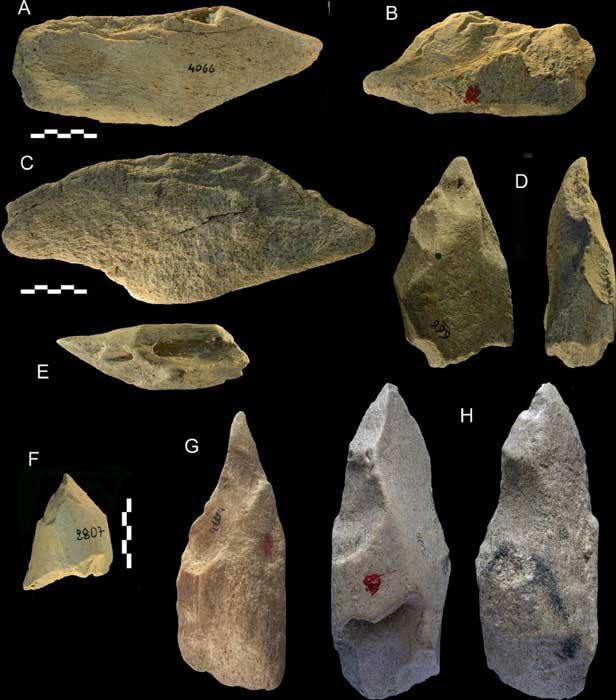400,000 years ago, a mysterious ghostly human species, leaving no skeletal remains, hunted gigantic white elephants and used their bones to craft remarkably intricate tools, continuing to dominate ancient Italy.
According to Ancient Origins, the astonishing archaeological treasure consists of many bizarre, one-of-a-kind tools excavated at the Castel di Guido site near Rome (Italy), scattered over the years from 1979 to 1991.

Close-up of some specimens from the “treasure of the ghostly human” – (Photo: CU Boulder Natural History Museum).
To date, thanks to more advanced analytical techniques, an international research team from Italy, France, South Africa, and the United States has reconstructed the world of these ancient masters from these tools: a mysterious human species that dominated Europe 400,000 years ago, not our Homo sapiens ancestors.
According to a publication in the journal PLOS One, all 98 valuable artifacts were crafted from large bones of the elephant, using an astonishingly advanced technique. These spears and bone knives are exquisitely crafted, far surpassing many tools from the Stone Age tens of thousands of years ago, despite dating back 400,000 years. To create these bone tools, these mysterious masters also needed many other sophisticated stone tools to carve the bone segments, as the large bones of elephants are quite sturdy.
Analysis results indicate that these bones belong to a gigantic white elephant species that lived in the Eurasian region and has since gone extinct.
Another significant question arises: who were the creators of this “timeless” collection of intricate tools? According to Professor Paola Villa from the Natural History Museum at the University of Colorado Boulder (USA), they suspect it was the Neanderthals or Homo erectus.
Neanderthals, who existed on Earth from about 800,000 to 30,000 years ago, are a species very close to Homo sapiens, believed to possess comparable intelligence, a larger brain, and physical attributes that may have surpassed our ancestors significantly, potentially developing some tool-making skills and fiber weaving even before us. Meanwhile, Homo erectus, existing from about 2 million to 100,000 years ago, is considered the first species of the genus Homo that was fully upright and knew how to use and craft tools.
However, they left no biological remnants in this area, or we have yet to find any. Therefore, further research and subsequent excavations are needed to uncover the whereabouts of the “ghostly human”. This would be an exciting discovery, as the finding of bone tools dating back 400,000 years has changed history. Bone tools only became common around 300,000 years ago, but in a much more primitive form than the “treasure” found in Italy.





















































